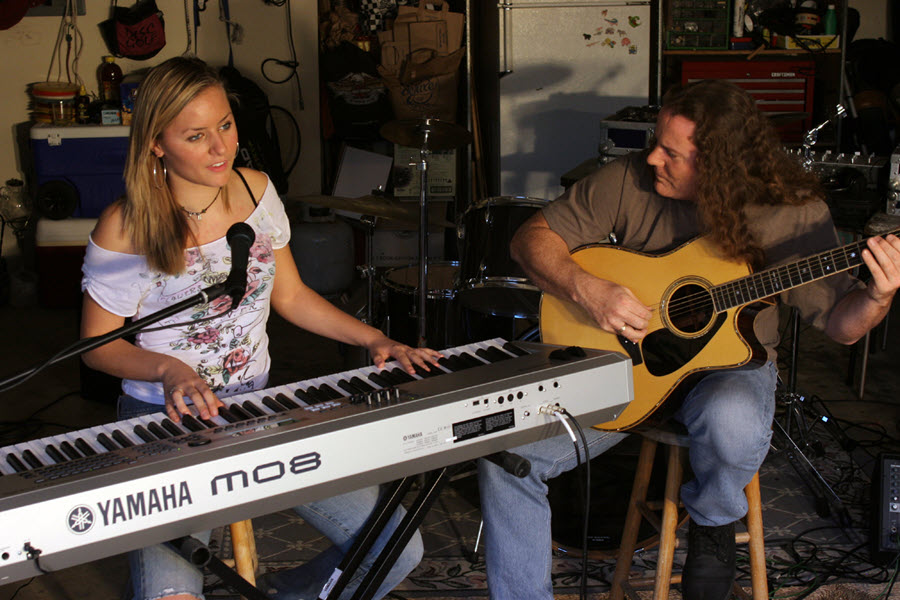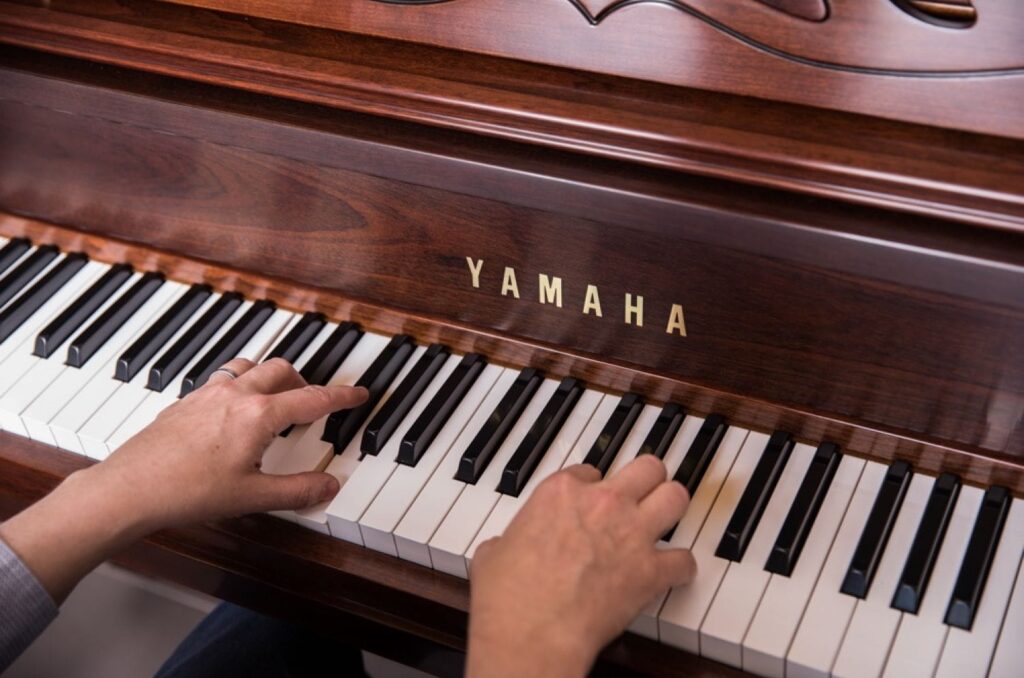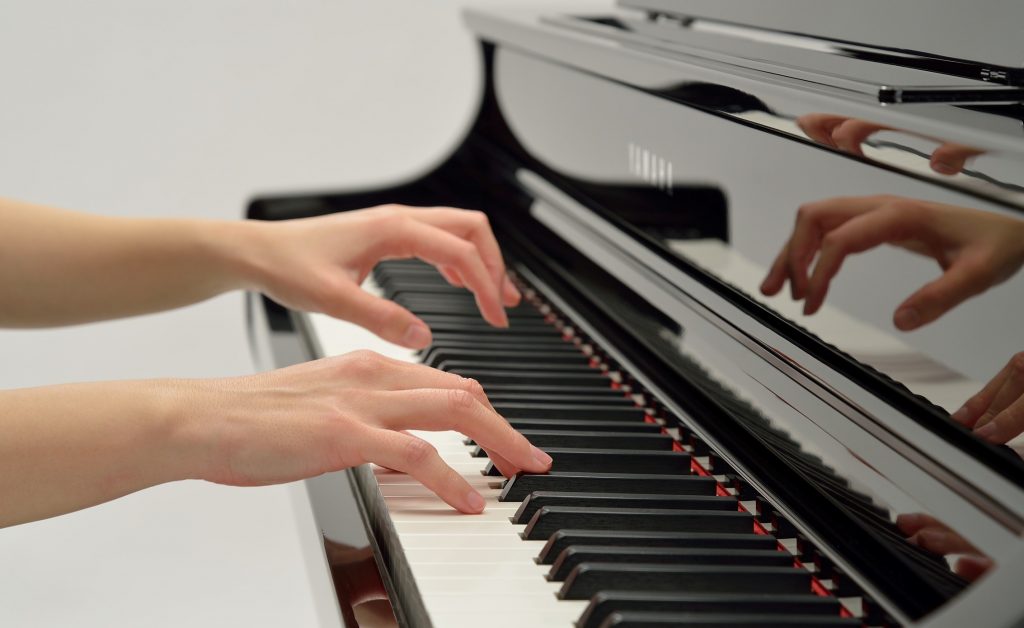Tagged Under:
Reharmonizing Songs, Part 3
A deep dive into finding alternate chords for your songs.
In Part 2 of our exploration into reharmonizing songs, we began substituting chords to provide color — chords that didn’t have any specific functional behavior, or in some cases, didn’t even come from the implied key center.
In this article, we’ll continue that journey by introducing some advanced structural concepts.
Move Your Bass Notes
Since we’ve seen that pretty much any chord that fits the melody note or phrase is fair game, try to use some methodology to help find your way within all the available possibilities. One way to do that is to move your bass notes, either upwards or downwards.
The melody that we’ll be working with is similar to the one we used in Part 1 and Part 2 of this series:

In this first example, I’ll start with a C bass note, and keep ascending upwards every two beats, varying the chord types as I go:

As you can see (and hear), the bass line is climbing by half-steps from the beginning all the way into beat 3 of Bar 4. I end that bar with a chord labeled as an F half-diminished 7th, with the last melody note spelling out the 6th or 13th of that chord. That’s also a common way of playing a G dominant seventh chord with a flat 9th and flat 13th, without the root in the voicing. Jazz pianists often play these rootless voicings so they can stay out of the way of the bass player, who will usually be playing the root (amongst other notes). So this chord does have a function, wanting to resolve back to a C chord (also played as a rootless voicing). I did this to give the listener a sense of conclusion.
Note that I am always observing good voice leading, which means moving the notes as smoothly as possible from chord to chord. My voicings are coming from a modern jazz sensibility, and I am making use of a lot of stacked fourths in them, which is a sound associated with the late, great pianists McCoy Tyner and Chick Corea. Specifically, look at the inner voices of the D-flat chord in Bar 1, the lower four notes of the following D minor, the inner voices of the E-flat, and the unique chord employed at the start of Bar 4.
Now let’s look at a different type of reharmonization using an ascending bass line:

Here, I start again on a C, but this time I begin climbing in whole steps for the first three chords (C to D to E), before going to half-step climbs (E to F, to F-sharp), etc. Within the first few chords you can see (and hear) that I am not in any specific key. I’m making my choices by following the bass line idea, fitting chord sounds to the melody, and specifically trying not to deliver any functional resolutions or expected sounds.
Had I, for example, chosen some type of A minor after the E dominant 7th chord in Bar 2, you would have had an expected resolution, and the piece would sound more tonal. But the atypical F minor voicing I chose signals that we’re not going for the usual stuff, and I tried to carry that flavor forward in the next couple of voicings. After the A-flat major7th voicing, however, I felt I was painting myself into a corner if I kept climbing, so I jumped back down to give myself some room to move.
Descending Bass Line Ideas
Now let’s try using a descending bass line instead:

This example is actually pretty tonal, and it uses a number of functional chordal passages, especially in the last two bars. It demonstrates how non-standard voicings can work … if they’re surrounded by more typical chords.
Let’s try another descending approach:

The first couple of chords sound pretty tonal/functional, but I did that so I could surprise you all the more in Bar 3, where I wanted to present unusual and interesting chordal choices … though admittedly, that E minor voicing is very difficult to play. When you get to the A-flat voicing in Bar 4, it seems like a resolution: it sounds “at peace” and final. But that’s a false feeling that I tried to extend by making the next few voicings also very smooth, with no tension in the chord structures. The D-flat hangs nicely in the air, and then resolves back to C to end the harmonic journey where we began.
One more example of how to use a descending bass line:

This time I chose not to start on a C — remember, anything is possible! We begin with some parallel major7th chords, similar to an exercise in Part 2. Yes, the D note doesn’t quite “fit” with the G-flat chord, but it goes by quickly. After the Esus chord, I use some parallel minor chords, followed by parallel Major 7th chords with sharp 11ths. The whole example is anchored by the constant use of the same structure in the left hand: notes stacked in fifths, with very wide/open voicings. That construct is, however, abandoned for the last chord in bar 4, which is a dissonant poly chord: think of it as a G triad played over a D-flat triad, even though I left out the third (F) of the left-hand D-flat chord. It resolves nicely into the C minor 6th, thanks to the good voice leading.
Freedom to Choose
Although you should get comfortable with approaches that use some sort of rule or structure to define your movement, at the end of the day you are, of course, free to do whatever you want. That means you can pick any chords and voicings that sound good to you, with no logic or explanation needed.
Let me show you some choices that I like. For example:

I suggest you first just try playing the two-handed chords that I placed below the melody:

As you can hear, they are beautiful and moody-sounding chords that have no functional relationship to each other, or to any specific key signature. I chose them because I liked their sound, and they do support the melody, albeit in unexpected ways. By letting them ring for the whole bar, they also convey a more relaxed feeling, and don’t need to relate to the next chord; this way, they come as a surprise each time.
One last, even more imaginative example:

Here we start out on a very colorful chord, and then follow it in the second bar with a cool descending inner-voice movement on the E dominant 7th. The B half-diminished voicing is an unexpected surprise, as is the “lift” you get from the B-flat minor that follows it. In Bar 4 I chose to mirror the descending melody by using an ascending bass movement, until the jump up on beat 4. That goes into another cool, dissonant type of voicing, which isn’t easily represented by a chord symbol but I think of as an A-flat triad over a Dsus voicing (there’s those fourths popping up again!). That “tension” chord resolves nicely into the last chord, which has a unique sound thanks to the use of the 2nd in place of the 3rd … and now the fourths show up in the right hand.
In practice, I would mix these exotic flavors into my arranging and playing; just like a good spice in a recipe, you don’t want to overuse them. Too much of this kind of reharmonization and your music won’t seem grounded — unless you are choosing to play more freeform, in which case you should go for it!
All audio played on a Yamaha P-515.
Check out our other Well-Rounded Keyboardist postings.
Click here for more information about Yamaha keyboard instruments.














